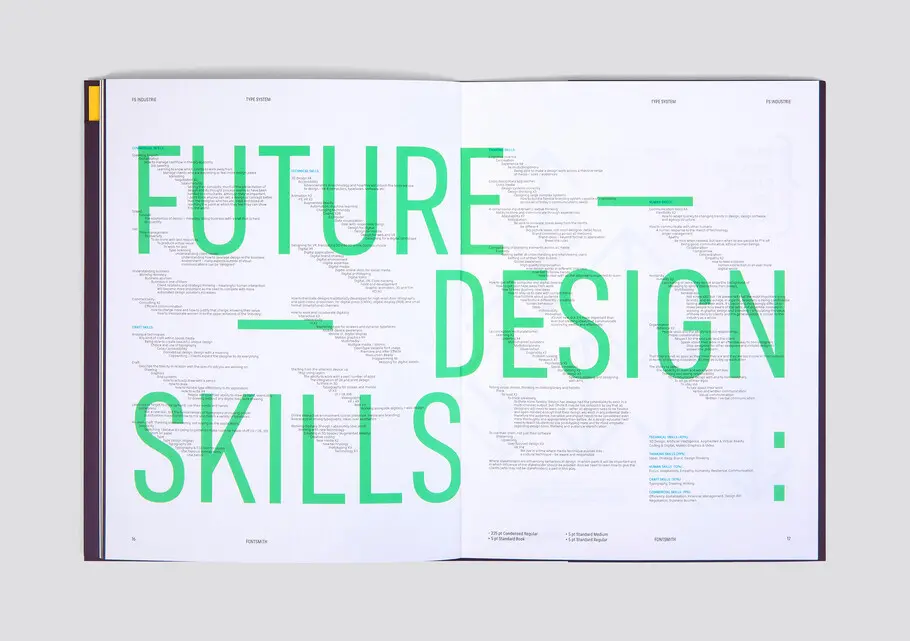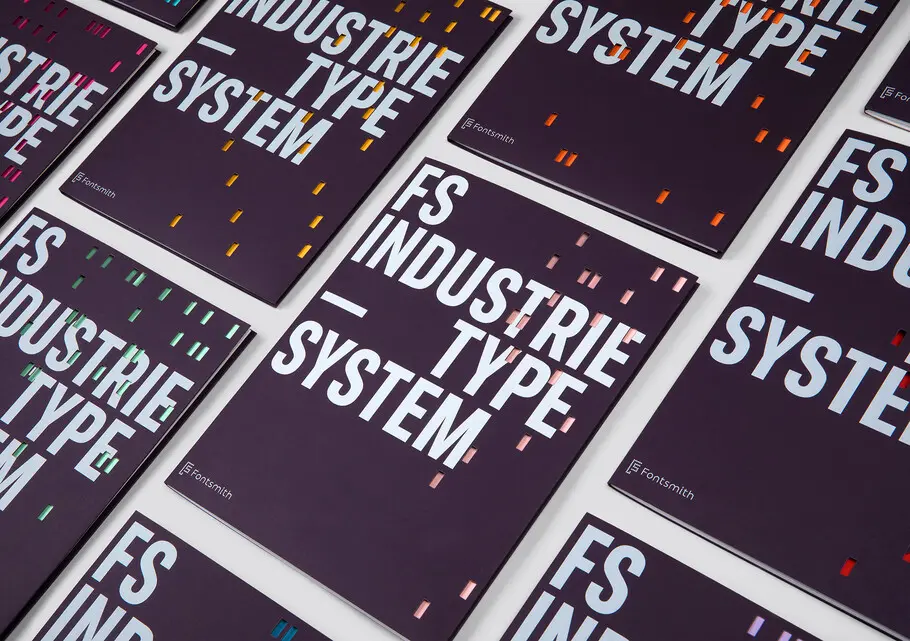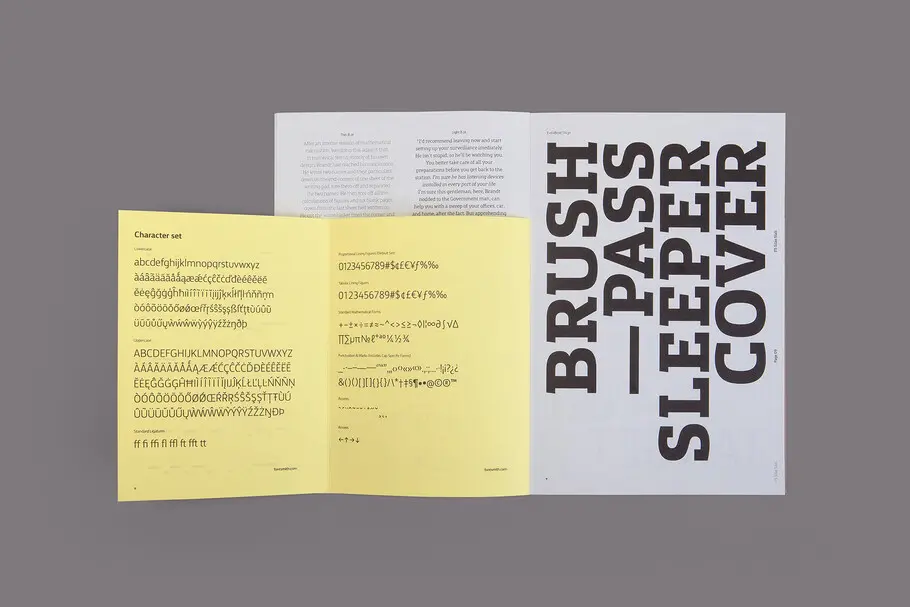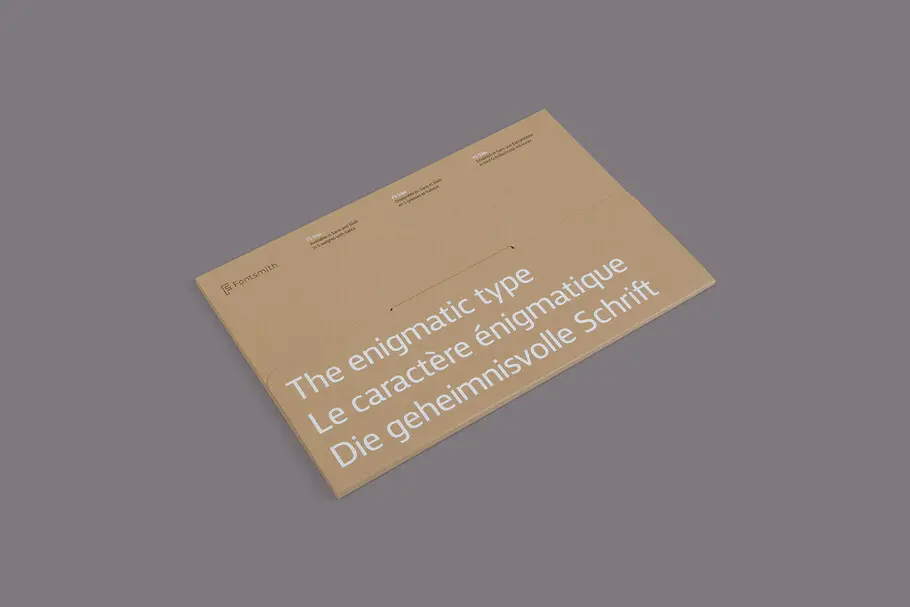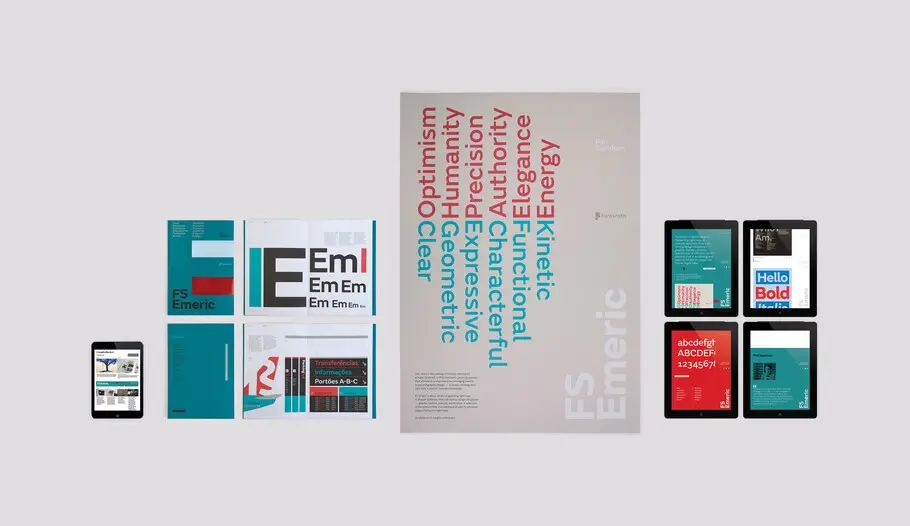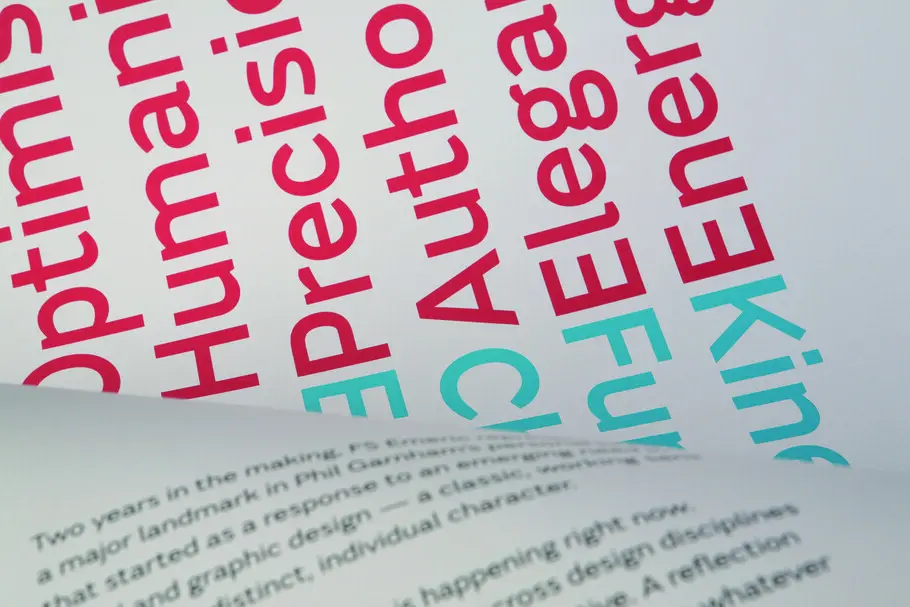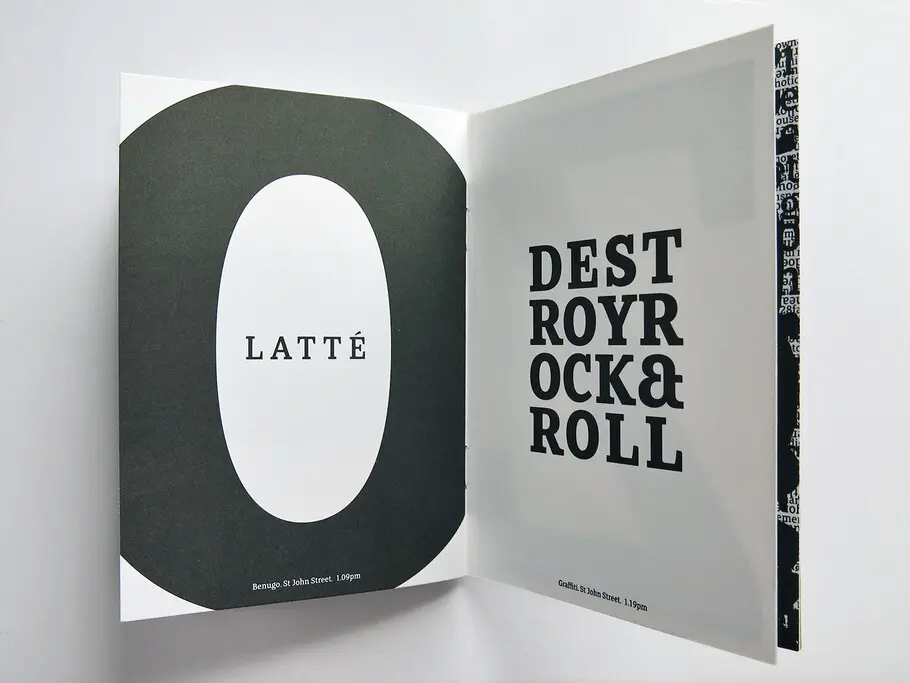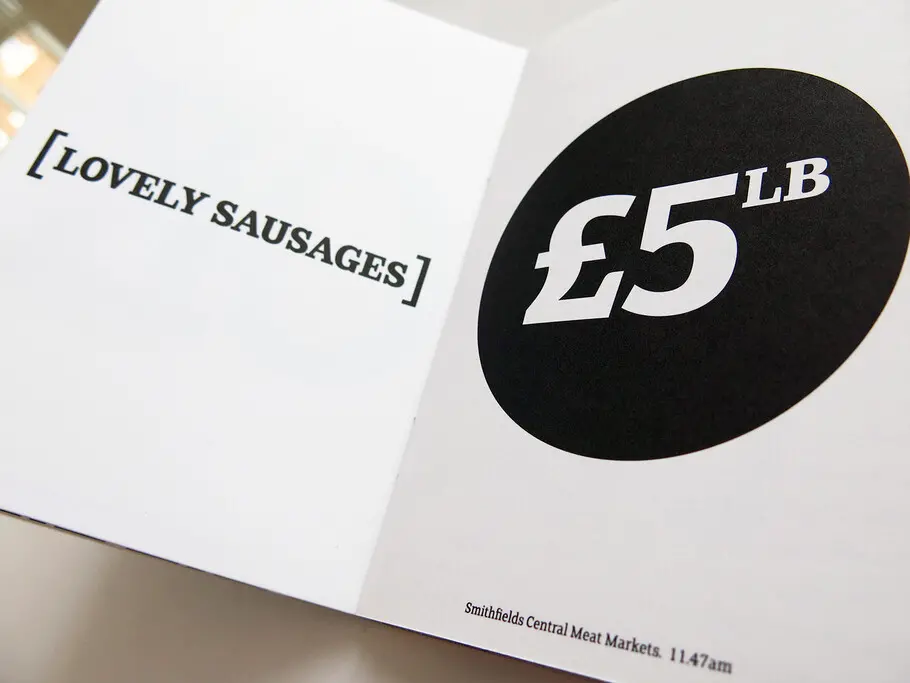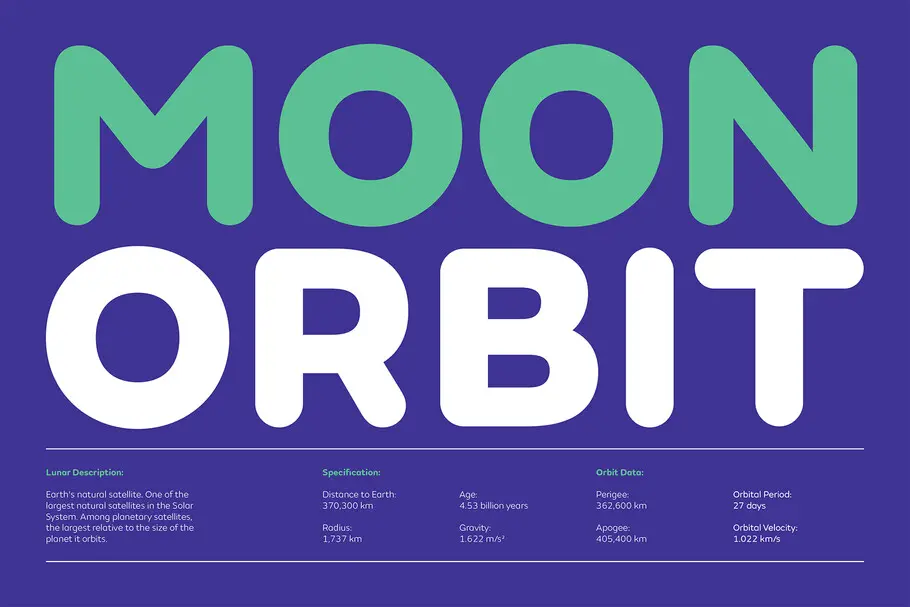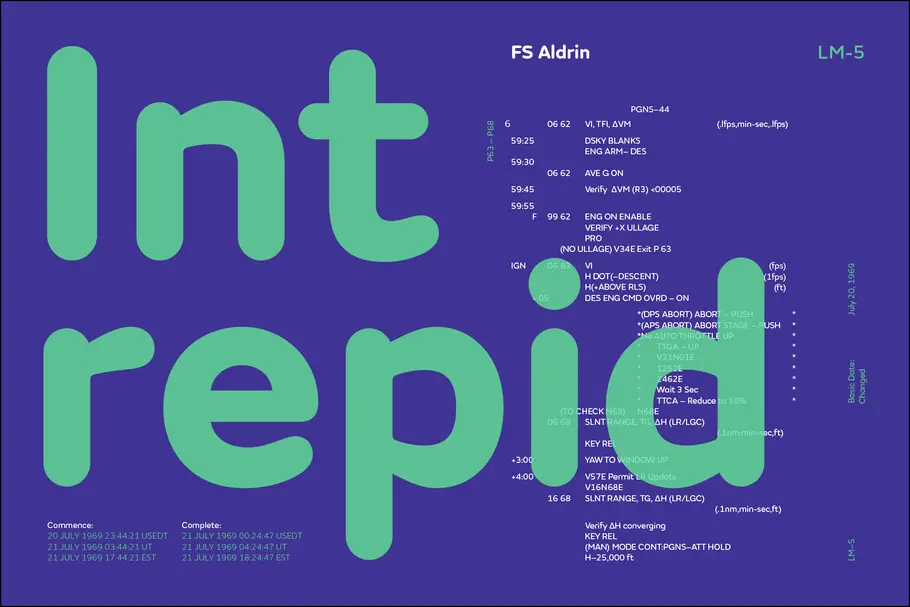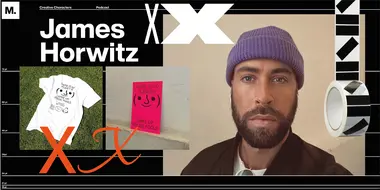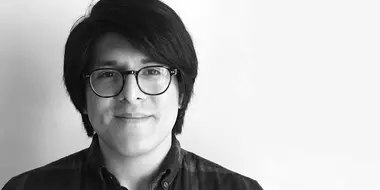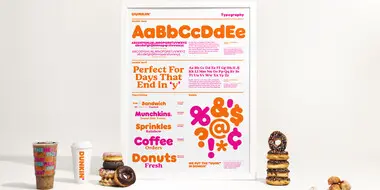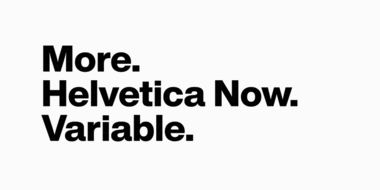What makes a great Creative Director?
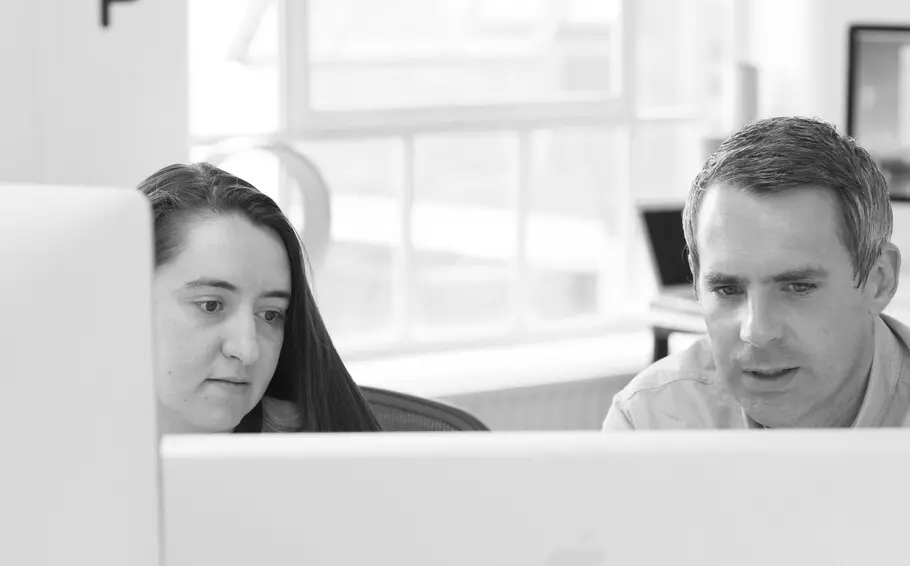
Phil Garnham, Creative Type Director, Monotype.
For many designers making it to the coveted role of Creative Director at a reputable agency is viewed as a ‘dream job’, and the realisation of reaching the very top of the career ladder. Fortunately, working with BNO Creative Director’s Forum, Monotype’s Phil Garnham is here to elucidate what it takes to become a Creative Director and how to thrive in the position - and even some wellbeing tips mixed in.
First published here.
Questions
Tell us your own path from Designer to Creative Director.
I guess my career as a type designer started out as a continuation of my student life, I bounced from internship to internship for over a year or two. I met a lot of people doing amazing things, but I didn’t really find my feet until a friend passed me a new foundry business card for Fontsmith. Back then Fontsmith was a one-man band run by Jason Smith. Jason and I hit it off, we had very similar ideas around pushing creativity through type and typography for brands. We set up our very own apprenticeship scheme which helped me to learn type design by being thrown in at the deep end! I basically worked on live logo and type design projects from day one and the role was even supported by the job centre under a ‘new deal’ scheme of all places! I don’t think I had the confidence to genuinely label myself a ‘type designer’ for a good five years into my career. Type design was quite a closed area of expertise back in my early years but as my confidence grew, I found I could meet the needs of clients and my own creative aspirations at pace. I became a company director and together we grew the team. I didn’t really notice that transition from designer to Creative Director until we grew from the 2 of us into 4 almost overnight. Our roles shifted, we had to create structure and that involved Jason and I stepping aside to define creative direction, consult over strategy, costs, timelines, finances, marketing, everything within the business really. That’s when I first began guiding rather than doing, though I still do a lot of doing… I think you have to. Our design team, Fernando Mello and Emanuella Conidi, were both fresh out of the MA Type Design course at Reading University. Custom type as brand was a relatively new idea back then, but everyone pulled together to achieve collective goals for Fontsmith. That helped so much, it was genuinely like a little family.
FS Industrie and FS Silas — Campaign Design: Blair Thomson (www.believein.net)
What was the hardest part of the transition from Designer to Creative Director?
I expected a tough transition and to be honest it still is a transition of constant re-thinking and re-learning today. No project is the same, no designer in the team is the same, everything is in flux and being agile and open about all aspects of life is fundamental to the role. It is very hard to let go of that granular control of all those small details in the project, a type design’s DNA, the minutiae… the way a curve is drawn, the inherent execution which is a very personal and individual thing. How many times have I said to myself ‘that’s not what I would do’! In this role you cannot single handily make everything, do every project. You need to learn to back off doing and focus a little more on being and guiding. To trust your team’s perspective but also challenge it respectfully, softer interpersonal skills are hugely important in navigating creative conversation, whether we like to admit it or not, we put a lot of ourselves into our work.
What specific qualities are essential to become a great Creative Director?
Plasticity, openness, curiosity, enthusiasm, a gut instinct, an ability to question yourself constantly without scrambling your eggs and to know, accept and share when you get it wrong. Celebrate the wins and keep a cool head when things get feisty. Most importantly — be you.
Tell us about some of the pros and cons of being a Creative Director.
You meet so many people from all walks of life, both client side and specialists that you can bring into your team. You can allow yourself to get swept up in the enthusiasm of the idea, co-ordinate across teams to make your thoughts become a reality. There’s a bigger sense of achievement when you know that you personally made something interesting happen, even when you didn’t do it all yourself. The cons… you have to make call’s that lead to difficult conversations about all kinds of things, both personal and creative and… those conversations can be met with blank stares. You have to report on timelines, team hours and you can sometimes have to work very hard to sell a great opportunity where budgets are small but creative opportunity is big. There’s also all the admin involved in running a team, no one wants to talk admin but it’s an important part of the role, how do you communicate and explain complex technical ideas with non-creatives such as project managers and new business folk. I guess it’s not necessarily a con, but another skill set that may or may not be as well developed as the creative skills that got you here in the first place.
In your view what are the primary responsibilities of the Creative Director in an agency setting?
To help create and nurture the most visually inspiring and fitting work possible from the studio. To look at something that works and then help provide that new dimension, to help find a hook, the angle, the application that takes it to the next level. Never share any work that doesn’t feel right. Set the standard and push the standard up. Help to exceed expectations.
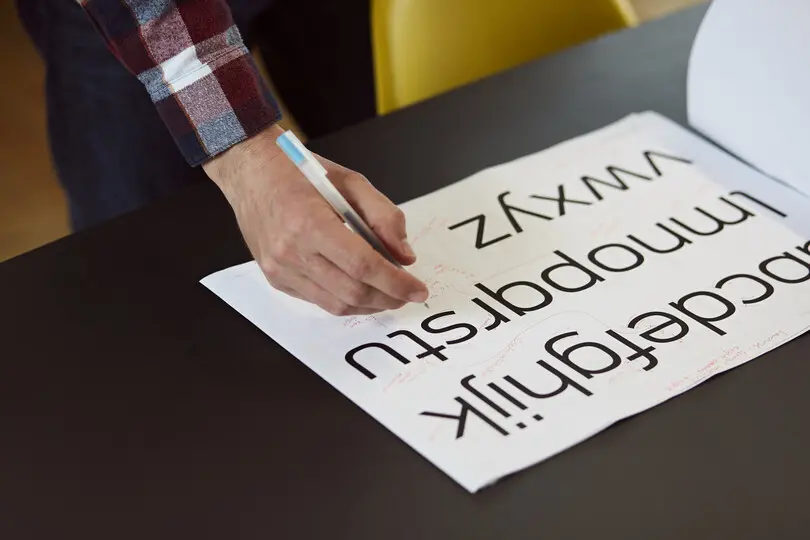
Describe your management style.
Smart casual. :P
Nurture a relaxed and open-ended conversational enthusiasm in the team, that’s where the great ideas live.
How long did it take you to feel completely comfortable in your role?
It’s uncomfortable to admit it but I’m a restless chap.
I practice yoga and meditation daily, I’m even training to be a yoga teacher and even with a decade of ‘OM’ practice, there’s still somewhere deep inside of me that’s striving, asking ‘wouldn’t it be great if we could do this or that better, more inspiring somehow, more epic, more notable…’ It’s a fire I can’t put out. I just want to be making the best work, as if somehow, it’s a failure if we didn’t try something new in every project. It’s this sense of everything being an endless work in progress that drives me. I was at a brilliant TypoCircle talk recently by Christopher Doyle where he said “Being at ease with what I do is my greatest fear… once it feels easy, it’s all over.” This sentiment really struck a chord.
Did you ever suffer from what’s known as ‘imposter syndrome’? If so, how did you deal with this?
Last year was a big year. Fontsmith was acquired by my new home Monotype, just one month prior to the pandemic and it made a lot of sense. We were both working towards similar goals and stepping on each other’s toes, but I unquestionably felt like an imposter for a long time, like I had to prove myself all over again. For years I had been in awe of the work of my now colleagues Charles Nix, Tom Foley, Akira Kobayashi, Tom Rickner… these chaps really know their stuff and welcomed me with open arms, I’m very grateful for that. But merging into this new role from a company of 13 into one of 500 is a hell of culture shock. Throw in the pandemic and the turbulence an acquisition brings… well it took a long time to feel comfortable at the meeting table and build myself back up. I’ve been thinking a lot about faith recently, not so much religious faith but faith in a perceived ideal like a hero or role model, faith in yourself, trusting in the universe(!), that you have everything you need within you already to do the right thing. It sounds a little far-fetched, but I honestly think cultivating that self-awareness and understanding that you really do know your shtick is the only way out. Say ‘yes’ and embrace the things that scare you. Know that those experiences will help to ground you.
FS Emeric — Campaign Design: Blair Thomson (www.believein.net)
What has been your biggest learning experience as a Creative Director?
Delegate mindfully. I struggled with delegating work for a long time.
Play to people’s strength’s but also be mindful of varying the ask.
And as you can imagine, in type design there are repetitive tasks.
Open up the conceptual phase, work the creative and conceptual phase across the team, share the good things and own them collectively.
Is it important to set and adhere to a creative vision for the agency? If so, why?
I think it’s important to have an overarching collective vision as a leadership team for where the business is heading, where do you want to be and how do you get there? A set of fundamental goals to work towards but creatively, at least in the Monotype Studio, I think each of us has our own individual approach to creating type and we all have different backgrounds, experiences and even cultural understanding as the team is spread wide across the globe. And that diversity is quite exciting. Some projects instinctively feel better suited to others and we share the opportunities, running weekly feedback sessions between us all and it sparks interesting conversations about type and creative direction. So, at business level yes, at project level no.
Should a Creative Director be hands on or hands off?
Both on and off. You can’t be on for every project, but neither should you be off for every project. Personally, I need to be drawing and thinking, staying sharp, leading by example and driving new ways of thinking. I think losing that connection to graft is a one-way trip to losing your mojo, it will disconnect you from the reason you got started in this game in the first place. Chip in and help others.
What tips do you have for building and nurturing a healthy and vibrant creative culture within an agency?
We spend so much of our lifetimes working, for me this creative life has to become a home away from home, a chosen extended family, it’s in everyone’s interests to make it work and create a bigger, collaborative culture. As a Creative Director, fostering this mentality and studio culture is your responsibility. It’s vital to your collective output and you can only do that if you lead by example and become an open book, share almost everything about yourself and what you think. Actively share creative things you are seeing, talk about the things you do at the weekends, go to that talk together, have a summer social, buddy up team members to gently nurture that collaboration on a project, don’t let the weekly creative share slip (and all opinions are welcome), start a monthly creative interest talk for the team — any subject! Basic initiatives can go a long way in building relationships and skill sets.
What tips do you have to continuously inspire creative teams?
I think with the right culture that continuous inspiration comes quite naturally, folks start feeding off each other and before you know it your role almost changes from facilitator to moderator. I always try to involve the designers in meetings with a new client or agency project kick-off and have them present their ideas. Also, the team supports university crit sessions, workshops, studio presentations… Again, I guess it all comes back to being open and having a genuine collective mentality.
FS Clerkenwell — Campaign Design: Ian Whalley (www.ianwhalley.com)
How do you maintain your own creativity to ensure you remain on top of your game?
I’m a perpetual hobbyist. I’m not sure where that comes from, maybe it’s that inner striving for knowledge thing again. I created a brewery in my garage for a few years and then scrapped it and then started doing a lot of street photography (@philgarnham). I’m really interested in graphic novels at the moment and have started a new illustration project exploring this idea of graphic novel personalities (@peak_pip). I write and record my own music, I run, I yoga, I swim, I Lego… I just like doing and making things and having young kids really help supports that too. Ultimately, I really want to cultivate that same curiosity in learning for my kids too. That’s a goal.
How do you create a balance between giving your team creative space while maintaining overall responsibility for the creative output?
I’m very lucky that we have such a strong team of designers at Monotype. There’s a great blend of type purists, tech innovators and brand savvy designers. Most of my conversations are around filtering and collectively agreeing the best path forward with the team and client. It’s not often that things go way off, but in those instances when it’s just not happening, you must be honest and open about your expectations, become an active voice and almost give permission to hit reset or explore differently or even be quite direct and sketch something. Sometimes it only takes a quick doodle to evolve and see new places — say ‘let’s explore this.’
In your opinion what is the best way to give feedback on creative work?
In person or online with camera on.
Prepare to activate the agility muscles.
Middlesex Teach Session, with Krista Radoeva.
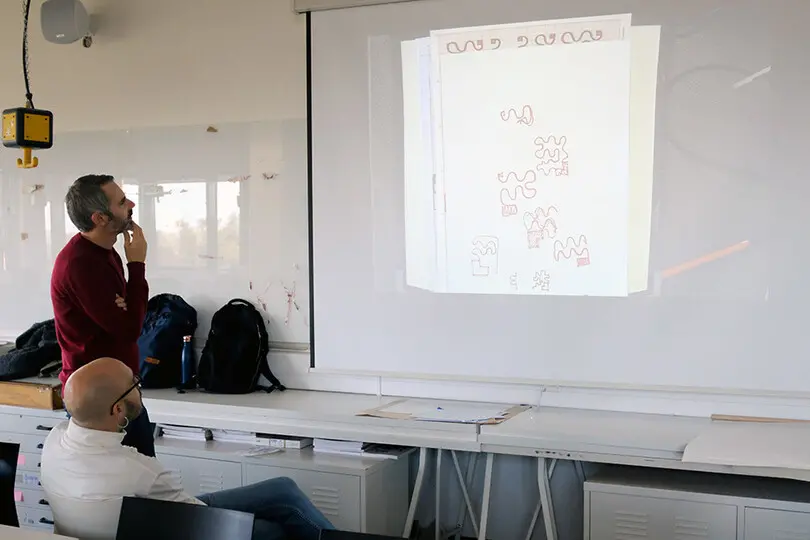
How do you defend creative ideas to stop bad things happening to the work?
Always, always, always tie the work to the brand. Finding tone of voice is normally quite intuitive, it’s almost hard wired in the subconscious. Linking that tone to a broader visual, strategic and functional idea is the most important and also hardest part.
What has been your biggest success as a Creative Director and why?
So many great projects and times we felt like we moved the needle along… I guess the biggest success I have is a joint success, when I joined Fontsmith in 2002 Jason had made the E4 custom font and FS Albert had just landed. From there on we shaped it together, built the font library, won the custom projects and made it into something bigger than type. A community, a family that got together every day, to walk to the park, to make nice things for good people and do some good for charity too. I’m immensely proud of what we did and forever grateful to Jason for giving me the opportunity. I’m also thrilled I have the opportunity do it all again with everyone at the Monotype Studio.
FS Aldrin — Campaign Design: Blair Thomson (www.believein.net)
What was the best piece of advice ever given to you as a Creative Director?
Know that you know what you are talking about.
And finally, what advice would you give to anyone who has recently been promoted to the role of Creative Director?
Credit everyone.
Follow your gut.
Be kind.
Meditate.












